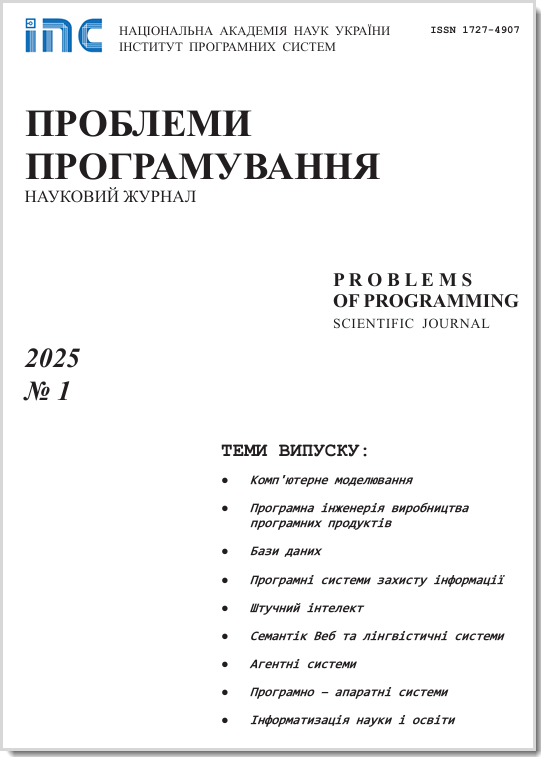Simulations of hypertrophied heart’s hemodynamics
Abstract
The paper describes the modeling technology and the main results of the simulation of hemodynamic effects of cardiac hypertrophy (HH), conducted using previously published mathematical model (MM) [9]. The dynamics of hemodynamic abnormalities are not modeled. MM simulates changes in the central hemodynamics at different degrees and forms of myocardial hypertrophy (MH). Software technology provides a simulation of three types of HH: a) adaptive HH arising in response to the chronic lack of the systemic circulation; b) abnormal HH, which is at the extreme stage of adaptive HH; c) abnormal MH of left ventricle. The first two versions of HH have been simulated by increasing of myocardium’s stiffness, while the third version of HH is simulated via additional decrease of the unstressed volume of the left ventricle. For each version of HH a compensatory potential of self-regulation mechanisms (model uncontrolled cardiovascular system) is studied, and then similar opportunities of baroreflex regulators of hemodynamics have been evaluated. HM satisfactorily reproduces the main changes in blood pressure, cardiac output, and heart rate. The likely role of cell energy mechanisms in the cardiovascular system adaptation to high loads is discussed. The simulator is an autonomous program which can be both a tool to support the medical-physiological research and an educational means for demonstrating causal relationships to medical students. An implementation of the program in a more general program-modeling complex focused on the identification of patterns of functioning of super-human energy is planned.
Problems in programming 2016; 2-3: 254-263
Keywords
Full Text:
PDF (Русский)References
Grygoryan R.D. The concept of virtual organism in bioinformatics // Problems in programming. - 2007. - N 2. - P. 140-150.
Grygoryan R.D. Biodynamics and models of energy stress. Kiev, Institute of software systems of National Academy of sciences of Ukraine. - 2009. - 331 p.
Kohl P, Noble D. Systems biology and the virtual physiological human // Mol Syst Biol. -2009. - 5. - P. 292-299.
https://doi.org/10.1038/msb.2009.51
Clapworthy G., Viceconti M., Coveney P.V., Kohl P. The virtual physiological human: building a framework for computational biomedicine I. Editorial // Philosophical Transactions of the Royal Society. - 2008. - 366 . - P. 2975-2978.
https://doi.org/10.1098/rsta.2008.0103
Grygoryan R.D., Aksionova Т.V., Markevich R.V., Deriev I.I. A software simulator of pancreas // Problems in programming. - 2013. - № 1. - P. 100-106.
Grygoryan R.D., Lyabakh K.G., Lissov P.N., Deriev I.I. Aksionova Т.V. Modeling of human energy megasystem // Kybernetics and computing technics. - 2013. - Is. 174 - P. 90-98.
Grygoryan R.D., Aksionova Т.V., Deriev I.I. A software simulator of responses of an aerobe cell to energy imbalance // Problems in programming. - 2014. - N 1. - P. 90-98.
Grygoryan R.D., Lissov P.N., Aksionova Т.V., Moroz A.G. A specialized software-modeling complex "PhysiolResp" // Problems in programming. - 2009р. - N 2. - P. 140-150.
Grygoryan R.D., Aksionova Т.V., Degoda A.G. Моделирование механизмов и гемодинамических эффектов гипертрофии сердца // Kybernetics and computing technics. - 2016. - Is. 184 - P. 88-96.
https://doi.org/10.15407/kvt184.02.072
Aksionova Т.V. A software technology for providing of simulation experiments on mathematical models of physiological systems // Problems in programming. - 2012. - N 1. - P. 110-120.
Grygoryan R.D. The energy concept of arterial pressure // Reports of the National Academy of Sciences of Ukraine. - 2011. - N 7. - P. 148-155.
Grygoryan R.D. The Energy Basis of Reversible Adaptation. - 2012. Nova Science, New York, USA, 250p.
Grygoryan R.D., Lyabakh K.G. The cornerstones of Individual Adaptation to Environmental Shifts. In: Daniels J.A. (Ed.). Advances in Environmental Research. Nova Science, New York, USA. - 2012. - 20. - P. 39-66.
Grygoryan R.D. The "floating" arterial pressure paradigm.- Dusseldorf, Germany. Palmarium Academic Publishing. - 2016. - 417 p.
Lakdawala N.K., Givertz M.M. Dilated cardiomyopathy with conduction disease and arrhythmia // Circulation. 2010. - 122. - P. 527-534.
https://doi.org/10.1161/CIRCULATIONAHA.109.892240
Berry J.F., Naseemen R.H., Rothermel B.A., Hill J.A. Models of cardiac hypertrophy and transition to heart failure. Drug Discovery Today: Disease Models. - 2007, 4. - P. 197-206.
https://doi.org/10.1016/j.ddmod.2007.06.003
Dellefave L., McNally E.M. The genetics of dilated cardiomyopathy. Curr. Opin. Cardiol. - 2010. - 25. - P. 198-204.
https://doi.org/10.1097/HCO.0b013e328337ba52
DOI: https://doi.org/10.15407/pp2016.02-03.254
Refbacks
- There are currently no refbacks.



